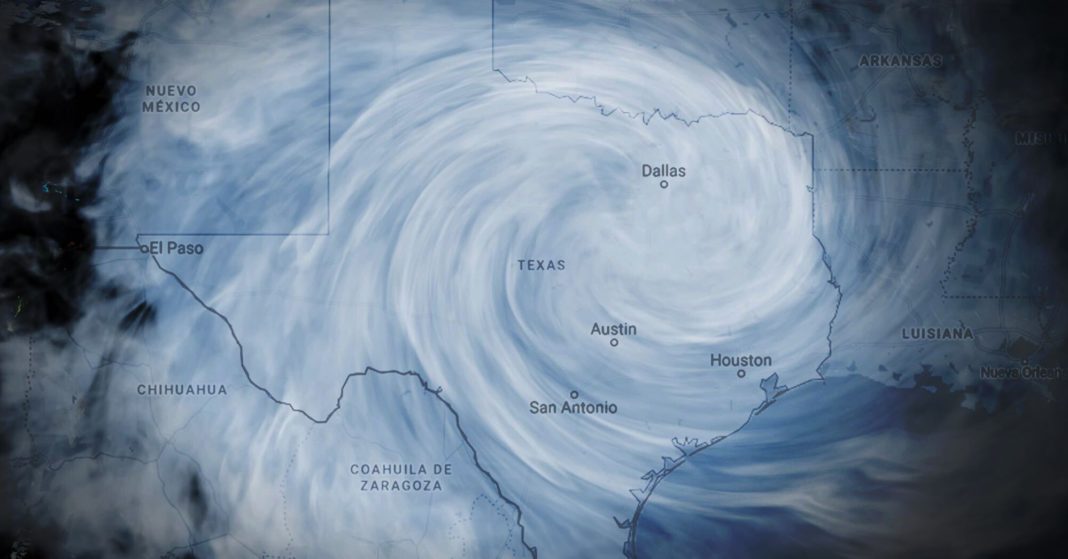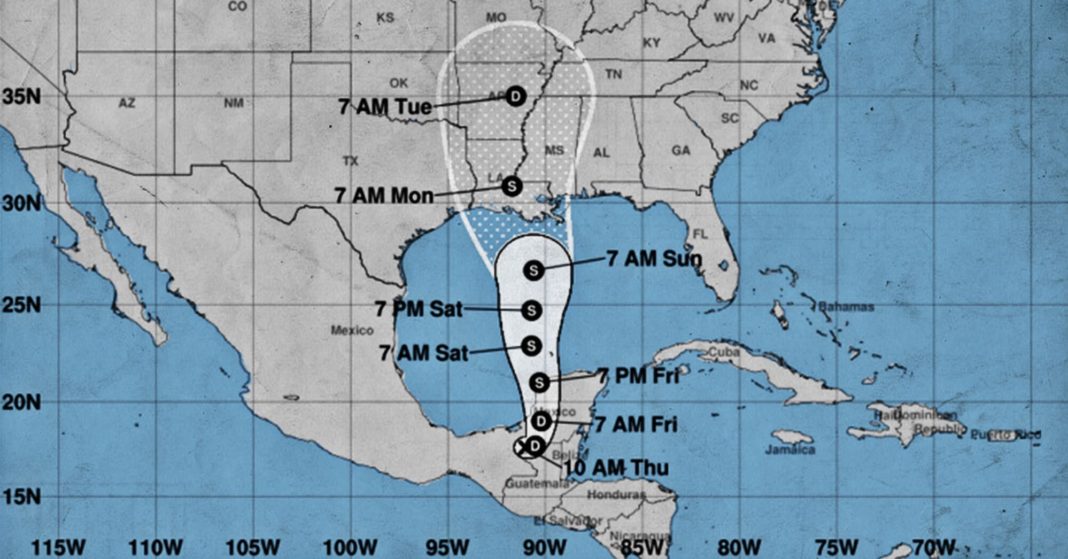Experts are monitoring the season’s first tropical storm, Cristobal, this week. In the midst of a public health crisis, the idea of a hurricane and subsequent flooding seems especially disastrous. Texans may be wondering if they need to do something different to prepare than they normally would. Could the state handle more than one disaster at a time?
Gov. Greg Abbott addressed Texans on Friday in a press conference on the current storm and about hurricane preparedness amidst the coronavirus.
Specific preparations for the state related to a hurricane during the coronavirus include a 211 call system that coordinates with local emergency first responders and plans to evacuate seniors from nursing homes. Nursing homes have experienced extremely high numbers of coronavirus cases with thousands of cases and hundreds of deaths. Protecting these — and other vulnerable communities — is a major part of the state’s hurricane preparation this year.
Texas plans to follow guidelines from the “COVID-19 Pandemic Operational Guidance for the 2020 Hurricane Season” developed by the Federal Emergency Management Agency.
Abbott said this hurricane prep in particular — because it’s the first one the state has experienced during a public health crisis like coronavirus — requires “greater caution and greater response.”
“As local officials go about their task of responding to this tropical storm challenge, they need to be cognizant constantly about the possibility this could stoke people coming together in ways that transmit COVID-19,” Abbott said during the press conference.
Judge Lina Hidalgo also hosted a press conference in Houston Friday, and she has been consistent in encouraging residents to prepare well ahead of a storm — before they think they need to. This is especially important in light of the pandemic.
“If you were to evacuate, where would you go?” Hidalgo said in a press conference in May. “Unfortunately, hurricane season doesn’t give us the courtesy of waiting until the COVID-19 crisis subsides. We must do everything we can to prepare together, and stay focused on working to be resilient.”
And as it turns out, the best preparations Texans can make ahead of a disaster of any kind — whether it’s for a pandemic, a hurricane, or something worse — can be applied across the board of disaster outcomes, experts say.
“You have to look at the outcomes of what a disaster might entail because there are multiple disasters that have the same kind of outcomes,” said Rafael Lemaitre, communications director at the Harris County Judge’s Office. “For a period of time families might be on their own without local supply chains, so a hurricane kit is essential for when you have to stay home. That goes for a pandemic and a hurricane both.”
Things Texans should be doing right now will likely look similar to how they prepared for the pandemic: building a hurricane kit with three to seven days of water and food, stocking up on prescriptions and over-the-counter medicines, pet supplies, and batteries for radios and flashlights. Lemaitre also emphasized the importance of a strong communication plan and families taking the time to practice their plans to lessen panic and anxiety — especially in children — if the real thing happens.
“It’s about building a culture of resilience in families and the county,” Lemaitre said. “Disaster preparedness is good for families all year round because there could be a no-notice disaster unrelated to weather.”
One key preparation that Texan homeowners often overlook ends up being one of the most costly and devastating for them: flood insurance. Just one inch of water can cost a homeowner up to $25,000 in damage. Even if you live in an area where federal disaster relief is available, it’s not enough to get you back to 100 percent whole, Lemaitre said. Standard homeowner policies don’t usually include flood insurance, and there is often a waiting period.
Like with other preparations Texans should be doing for any disaster well before a hurricane — or something else — happens, it’s key to act quickly, Lemaitre said.
“The most costly disaster in the U.S. is by far flooding, and Texans are all too familiar with that,” Lemaitre said. “Judge Hidalgo spends a ton of time in her role working on projects related to floods and infrastructure changes to address a new reality given prior disasters. She implores people to buy flood insurance because of this. Given the COVID-19 crisis, this is not financially feasible for everyone. But for people who are able, they should try to buy flood insurance as soon as they can. As a city, we’re going to keep doing everything we can do, but it’s a shared responsibility at the end of the day.”
If Texans needed to evacuate and take shelter from a storm somewhere other than their own home, this is where a hurricane and a pandemic happening simultaneously would be “a lot more complicated,” to navigate, Dr. Thomas A. LaVeist, dean of Tulane University’s school of public health and tropical medicine, told the Dallas Morning News.
LaVeist said that the complexity centers around decision making, such as whether officials would encourage Texans to evacuate at all, and if so, when and who would need to evacuate first. With the pandemic fears in focus, LaVeist suggested that those with underlying health conditions or caring for someone at a higher risk for contracting COVID-19 could be more reluctant to evacuate and choose to ride out a storm.
And for those who do evacuate, once they are at a hurricane shelter — often many cots in one room in a convention center — the challenge would be to keep people six feet away from each other.
The FEMA plan developed for Texas includes alternate shelter options, such as using hotels and school dorms for high-risk people where they would be less likely to cross paths with others. Fewer people will be allowed in convention centers and large spaces that are usually used — a shelter that held 150 would only hold 50, as an example, under new guidelines that changed the needed space per person in a shelter from 60 square feet to 110 square feet, said Texas Division of Emergency Management Chief Nim Kidd.
The plan also encourages officials to direct people to drive through hubs to get directions to an appropriately spaced shelter and to have officials try to meet virtually instead of traditional command centers.
Local officials must also plan for different storm response strategies, including preparing more vehicles and more spacious vehicles to help people evacuate so they can maintain social distancing, Abbott said.
Families should plan for the extra time it might take to evacuate if social distancing on a bus is required. They should also pack masks and hand sanitizer in their evacuation kits.
For officials and Texas residents, both preparation and communication are vital to navigating this hurricane season during coronavirus.
“Frankly, it might mean evacuations for storms we might not have evacuated in the past for,” Kidd said. “Our communication is going to be critical because of COVID-19.”








